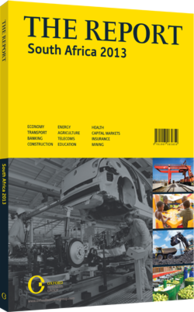A chemical shift: Finding the right mix of output to boost trade
Despite a well-developed chemicals sector, which owes much of its capacity to a historical need for self-sufficiency during the era of South Africa’s political isolation, the country remains a net importer of chemical products. According to data from the Department of Trade and Industry (DTI), South Africa exported R37.8bn ($4.6bn) worth of chemical products in 2011, while its imports ran to R65.3bn ($8bn). Addressing this trade imbalance by boosting the domestic chemicals sector has therefore become a strategic priority for the government, and features prominently in the overlapping strategy documents that are applied to the sector.
Government Strategy
According to the Industrial Policy Action Plan (IPAP) 2012/13, the “other chemicals” segment (i.e. those excluding basic chemicals) represents a value-added group with high employment and growth multipliers. The plastics, pharmaceuticals and chemicals sector, therefore, forms part of a wider group of sectors which have been identified as suitable for “scaled up and broadened interventions” on the part of the DTI as well as supporting agencies and departments in the form of the Department of International Relations and Cooperation (DIRCO), the Economic Development Department (EDD), the Development Bank of Southern Africa (DBSA) and Regional Economic Communities. Meanwhile, the wider Strategic Plan 2012/13 to 2016/17, also produced by the DTI, identifies the chemicals sector as a pocket of “technological leadership based on historical industrial strengths”, as well as one of a number of economic sectors which “employs substantial number of people and has significant prospects for development”.
State Funding
While ministerial policy documents leave little doubt as to South Africa’s determination to develop the sector, addressing the trade imbalance will require investment as well as government support. Much of this will originate with the Industrial Development Corporation (IDC), the national development financial institution established in 1940. Using the strategies outlined in the IPAP and the Strategic Plan as a policy template, the IDC is channelling state funding into a variety of segments – from the basic chemicals required by the auto and household sectors to speciality and fine chemicals further down the value chain.
As of early 2013 the IDC was establishing its 2013-18 budget and expects to be in a position to allocate some R4.5bn ($550m) to chemical projects connected with the energy sector, R1.8bn ($220m) to projects with a bearing on infrastructure, R1bn ($120m) to agricultural inputs such as fertiliser, and R1.4bn ($170m) to chemicals required for mineral beneficiation.
Private Sector Support
While the government is playing its part, the long-term development of the sector will require private sector investment. Areas of potential private sector interest include the automotive, packaging, building and electronic sectors, but pharmaceuticals have attracted the greatest attention over the past year. South Africa is the world’s largest market of anti-retrovirals, with over 1m adults and more than 100,000 children receiving state-funded anti-retroviral treatment in 2010, according to South Africa’s Chemicals and Allied Industries Association (CAIA). In November 2012 the government awarded contracts worth $667m to 12 international and domestic firms for the supply of HIV medicine, with South Africa’s Aspen Pharmacare picking up the largest slice of the supply manifest (20%) and Chicago-based Abbott Laboratories providing the largest non-domestic input (8.1%). The close of 2012 also saw Indian firm Cipla announce plans to offer $215m for a majority stake in the nation’s third-largest drug company, Cipla Medpro.
British player GlaxoSmithKline, meanwhile, has announced plans to lift its sales volumes in the country over the next five years by cutting prices, while Swiss firm Lonza and Novartis subsidiary Sandoz have indicated that they will expand capacity – the latter into the retroviral segment. This confluence of growing markets and domestic and international players utilising public and private capital makes the sector one of the more interesting areas of the industrial landscape.
You have reached the limit of premium articles you can view for free.
Choose from the options below to purchase print or digital editions of our Reports. You can also purchase a website subscription giving you unlimited access to all of our Reports online for 12 months.
If you have already purchased this Report or have a website subscription, please login to continue.

